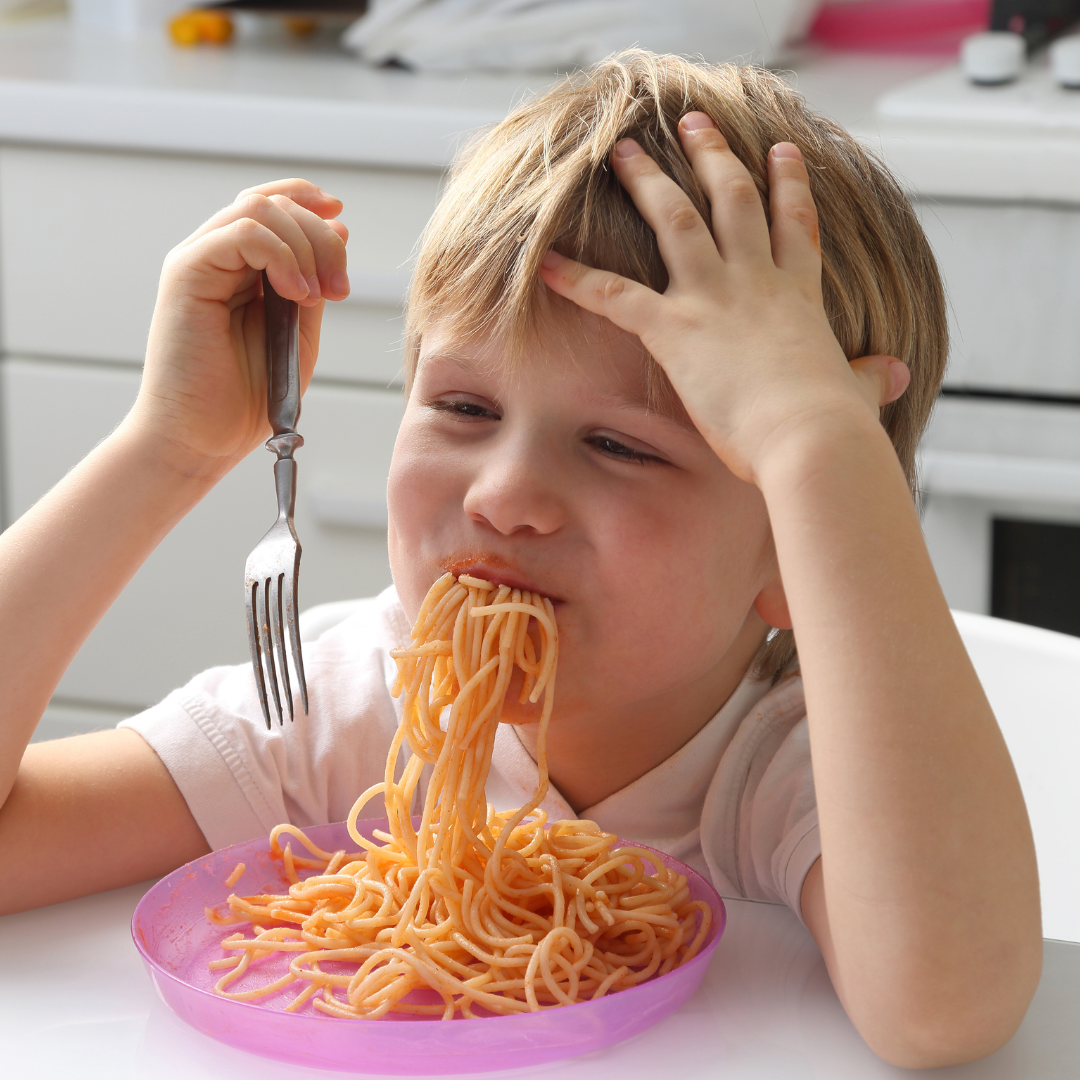Add Your Heading Text Here
Have you ever heard anyone say – or maybe even were the one to say – “Don’t play with your food!”, “food is for eating, not for playing,” OR “keep your food on the table and don’t make a mess!” Now let me ask you, have you ever known a child or adult with “picky eating” tendencies? Maybe they are only interested in a food from one restaurant, maybe there is an entire portion of the food pyramid they will not touch, or maybe when they see a new food they demonstrate a big reaction like gagging, coughing, or walking away.
We know that developmentally it is appropriate for a child to learn through play. This provides them with numerous experiences to learn about and experience their surroundings and develop positive relationships with their environment. BUT why can we play with toys, people, and objects, but not our food? Well, the answer is, food should be played with and here is why!
We can create positive relationships with food through play simply by learning how to engage with it and tolerate it in our surroundings

Food play offers an opportunity for kids to explore and learn about foods without pressure to “eat”, “taste”, or “bite” the foods. Children learn about foods through a variety of steps including looking, touching, smelling, and squishing foods. Over time, this increased exposure will allow increased comfort interacting with foods and can potentially lead to eating them when they are ready.
Recommendations to begin implementing routines around mealtimes:
- It can always be helpful to figure out or obtain information regarding your child’s sensory profile! Maybe they need heavy body work to calm their body before mealtimes, or maybe they need to get moving and grooving to get some energy out.
- Set routines around mealtimes. Give your child 5-10 minute warnings before mealtimes begin. Have them wash their hands, set the table and put the food on the table to prepare themselves for the meal.
- During the meal, DO NOT talk about how your child is eating. Talk about neutral topics that will not put all of the attention on the child.
- Your child may not be ready to eat all of the food that the rest of the table is eating, but provide them with an opportunity to explore. Give them a plate with a small amount of the unfamiliar food and allow that to be the exploration plate with no expectation to eat it!
- At the end of the meal, have your child help with the clean up process. Have them clear the table, the dishes and put them in the sink.


Tips and tricks for food exploration and fun!
- Have your child cook with you! This is a great, natural way to explore food. Allow them help mix, cut, and stir using child friendly utensils.
- Use fun cookie/shape cutters to cut foods into stars, hearts, animals, etc.
- Count how many pieces of food are on the plate or bowl.
- Use songs to move the food up and down the body (e.g. “The Wheels on the Bus” and having the food move up and down your arm).
- Wrap foods in napkins and open them like presents!
- Color with your food to see if they create colors on paper.
- Use real food in a pretend kitchen for pretend play schemes.
- Play along with your kids. Make funny faces on plates and take pictures of them. Have fun!
- Feed puppets or toy animals.
- Drive cars and diggers through cooked pasta/rice, canned fruit or Jello.
- Make a noise with a food to draw attention to it (e.g crunch, splat, pop, splash)
- Play peek-a-boo with foods.
- Make a teddy bear/doll picnic with real foods.
- Use paint brushes to paint with pudding or purees (if your child is not ready to touch)
- Touch and squish wet foods through Ziploc bags.
By Isabelle Filiciello: Speech-Language Pathologist at Kid Connections Therapy

